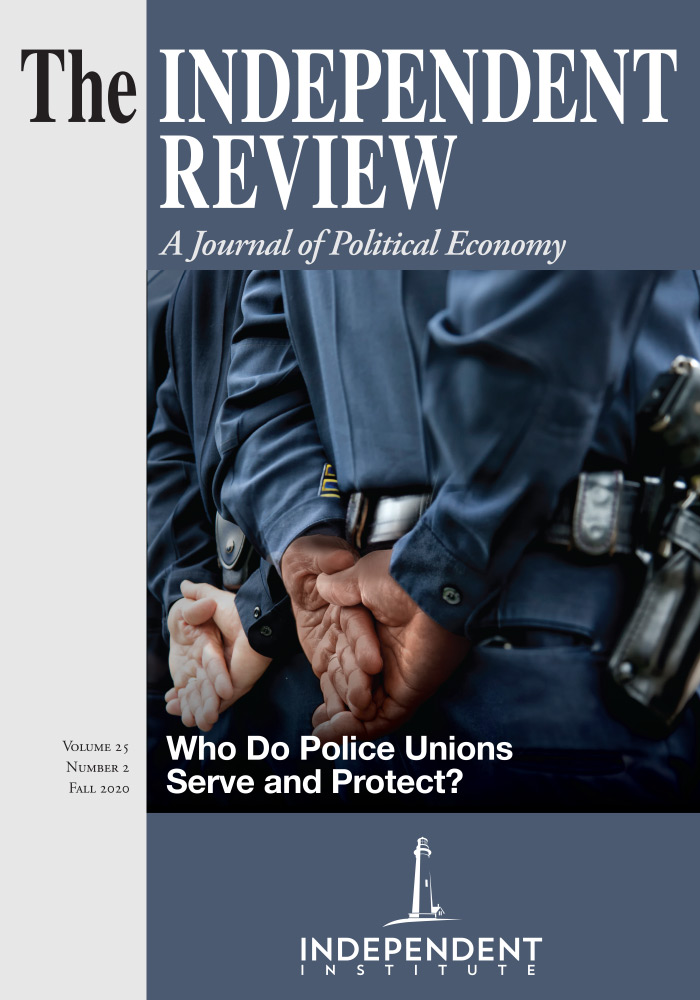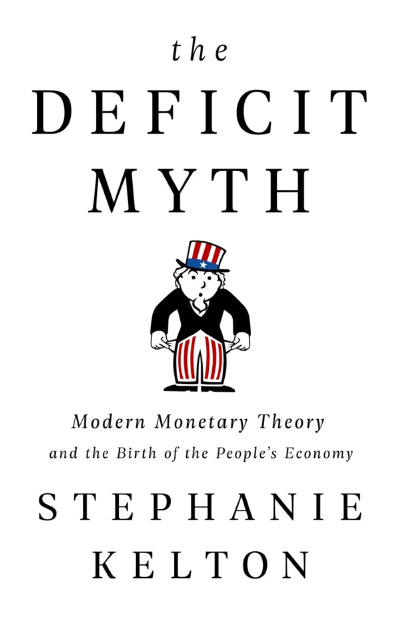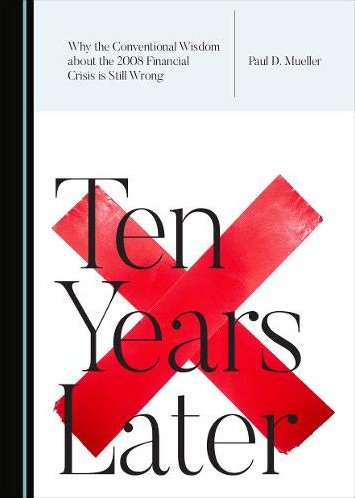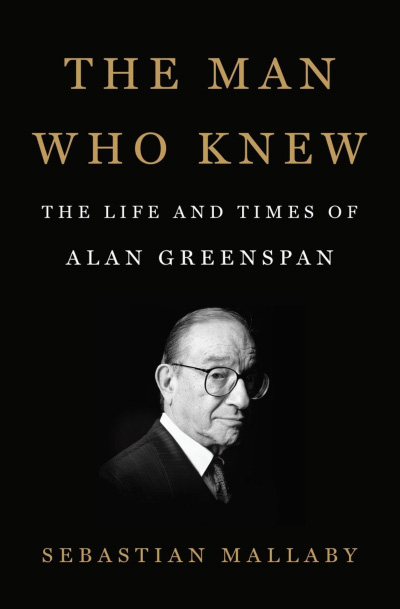2018 marked the tenth anniversary of the worst U.S. financial crisis and economic recession in recent memory. The books reviewed here, After the Crash and The Failure of Financial Regulation, assess the regulatory landscape in the wake of the financial crisis. They are both collections of conference papers, and both take a generally pessimistic view of the current state of financial regulation—but for significantly different reasons.
The contributors in After the Crash are generally concerned about two things. Firstly, they worry we didn’t necessarily get all the new financial regulation in Dodd-Frank right. There were major holes in the “comprehensive” legislation such as restrictions on how financial institutions structured their compensation. Secondly, many of the contributors in the volume argue that there is a regulatory business cycle. They argue that (at least before the COVID-19 pandemic) we have been in the “downturn” of the regulatory business cycle as the return to prosperity and business as usual, along with a significant change in the ruling party, have allowed many important aspects of Dodd-Frank to be pared away or defanged.
The contributors in The Failure of Financial Regulation, on the other hand, argue that the United States has been getting regulation of the financial sector wrong since long before the 2008 crisis. They argue that liberal capitalism with free competition, price discovery, and free trade has slowly been replaced by financial capitalism. Under this financial capitalism, the finance industry has undue influence on the rest of the economy—creating fragility, inefficiency, and inequity. The rise of finance capitalism occurred, they argue, because politicians, regulators, and many economists have not taken “government failure, market failure, regulatory capture, and moral hazard” seriously enough.
While there are many interesting parts to After the Crash, and I appreciate the authors’ goal of assessing the political economy of financial regulation, I cannot say I would recommend the book. The discussion is tailored to a very narrow aspect of financial markets and regulatory policy. It delves into the details of specific regulatory rules, financial models, and interagency conflict and history. The structure of the book also does not provide much cohesion:
- The Financial Crisis in Perspective
- Creating the Right (Dis)Incentives
- Use and (Ab)Use of Models in Predicting Financial Outcomes
- Regulating for the Next Crisis?
- The Origins of the Next Financial Crisis
I do not find this outline particularly helpful, but it gives some justification for how the chapters are organized. With the enormous abundance of books about the 2008 financial crisis available, it is hard to recommend this one unless one is very interested in the dynamics of financial regulation in the past decade.
Overall, the contributors seem very comfortable with the conventional wisdom regarding why the 2008 financial crisis happened, how it unfolded, and why the financial sector needs significant regulation. The problem was excessive risk taking by large Wall Street firms and regulators asleep at the wheel as fraud, predatory lending, and other shady or illegal activity generated huge amounts of bad loans. The crisis itself was generated by systemic risk, financial contagion, and firms being too big to fail. The authors assume these explanations are self-evident and begin their analysis of the political economy of financial regulatory systems from that starting point. (For extensive criticism of the conventional wisdom, see Paul Mueller, Ten Years Later: Why the Conventional Wisdom about the 2008 Financial Crisis Is Still Wrong [Newcastle upon Tyne, U.K.: Cambridge Scholars, 2019] and Peter Wallison, Hidden in Plain Sight: What Really Caused the World’s Worst Financial Crisis and Why It Could Happen Again [New York: Encounter Books, 2016].)
Chapter 1 contains a decent timeline of the crisis that may be of interest to those who teach about the 2008 financial crisis (pp. 30–39). In his contribution, Glenn Hubbard argues that new financial regulation should focus on two key problems: contagion and disruption caused by the failure of large financial institutions. His recommendations seem relatively modest.
But the most interesting, and oddest, contribution is chapter 11 by Emanuel Derman. This chapter is full of literary references and makes an interesting philosophical case for why models in finance are so often abused. Derman contrasts models, which are inherently imperfect simplifications of the world, with theory that he says “attempts to provide an accurate description of the nature of things, unifying the outward with the inward, not just saving the appearances by identifying their essence” (p. 186). I recommend this chapter to those interested in debates about economic methodology, such as Milton Friedman, “The Methodology of Positive Economics,” Essays in Positive Economics 3, no. 3 (1953): 145–78; Bruce Caldwell, Beyond Positivism: Economic Methodology in the Twentieth Century (London: Allen and Unwin, 1982); and Ludwig von Mises, Human Action (New Haven, Conn.: Yale University Press, 1949). See also works by Friedrich Hayek and Fritz Machlup.
The chapters in part 4 deal with the tension between narrow “rule-based” regulation and broad “principle-based” regulation. Both have downsides and advantages, and the key is to get the right mix and enforce them properly. The principle-based approach emphasizes the goal of regulation but can leave too much discretion to regulators in enforcing those principles. Paradoxically, overly broad regulation can also undercut the ability for regulators to pursue penalties and enforcement in courts because such regulation lacks specificity. Under the rule-based approach, regulators can strongly prohibit specific kinds of behavior. But it also leaves the door wide open for financial institutions to innovate and follow the letter of the law while violating its spirit.
Another tension throughout the volume comes from differing assessments of how much financial regulation has been trimmed back because of lobbying from the financial industry and shifts in the political climate. Many of the authors worry that the Trump administration’s zeal for deregulation, coupled with strong support from some Republican quarters in the House and the Senate, have led to deregulation that “guts” or “defangs” parts of Dodd-Frank and thereby sets the stage for a return of many problems that contributed to the 2008 financial crisis. One prominent example is the reduction in the scope and activity of the Consumer Financial Protection Bureau (CFPB) under Mike Mulvaney. These concerns fit within a broader downturn in the regulatory business cycle.
On the other hand, former Senator Barney Frank argues that Dodd-Frank has largely remained intact and unchanged despite the different political landscape (chapter 17, pp. 261–80). He brings unique insight into the political pressures and debates around financial regulation reform. His views also figure prominently in chapter 19, which is an abbreviated transcript of a roundtable discussion between three of the contributors and a moderator (pp. 301–29). In that conversation, Frank seems far more concerned about idiosyncrasies and overlap among regulatory agencies than he does with flaws in or erosion of the Dodd-Frank Financial Reform Act. But the authors are unable to answer clearly what the right amount and right kind of regulation is and whether the United States currently needs more, less, or different regulation.
In summary, After the Crash is a mainstream contribution to the current financial regulatory regime in the United States with a few interesting contributions. While I disagree with many of the authors’ assumptions about why financial crises happen, and especially why the 2008 financial crisis happened, their project of assessing the political economy of regulation is a good one. If they do not get as far as I would hope, or in the direction I would go, it is in part because the topic is a difficult one.
The Failure of Financial Regulation gives a more studied and focused take on regulation and the financial system. The chapters are written with a larger number of references and footnotes than the contributions in After the Crash. They argue that the financial industry both distorts the economy and wields too much power in modifying its own regulations. This has allowed “financial capitalism” to replace a more ideal “liberal capitalism.” The editors claim that they are not promoting “any ‘political’ or ‘ideological’ agenda” (p. 24). Though it is impossible to be completely independent of political or ideological beliefs, the contributions in the book do take a fairly objective tone and try to give a fair hearing to a wide array of views from Austrian to Public Choice to Keynesian to Post-Keynesian.
Laurent Dobuzinskis, for example, expresses support for the analysis offered by the Austrian and Public Choice schools of economics. But he caveats his support by claiming that their recommendations, particularly of free banking or the denationalization of money, are politically unfeasible. He also considers mainstream Keynesian arguments as well as the surge in Post-Keynesianism’s appeal. Ultimately, he argues that the knowledge problem is significant and underappreciated when it comes to designing and implementing regulation, but that we cannot take the approach of having as little regulation as possible. Instead, we should focus on second-best solutions that are politically feasible:
Political economists must think more about how their recommendations can generate agreement around second-best options than about showing that the solutions to the problems they have identified are technically unassailable, let alone ideologically pure. In a second-best world, government failures cannot be ruled out, markets are less than perfectly competitive, and financial crises cannot be fully averted, but they are less likely to be catastrophic (p. 66).
That seems a very sensible position to me. However, the devil is always in the details of what rules and regulations take all of those problems with markets, governments, and epistemic limitations seriously, while also being politically viable.
Theodore Cohn writes an interesting chapter about regulatory capture and finance. He looks at the individual, national, and global levels of regulatory capture and historical instances of it. Though it is a nice illustration of how special interests work with political coalitions to pass, modify, or remove regulations favorable to their industry, his chapter also assumes that significant deregulation and regulatory capture was the major cause of the 2008 financial crisis—not ignorance and misregulation as Jeffrey Friedman and Wladimir Kraus argue so compellingly in Engineering the Financial Crisis: Systemic Risk and the Failure of Regulation (Philadelphia: University of Pennsylvania Press, 2011).
Norbert Gaillard and Richard Michalek have a chapter explaining the history of moral hazard in U.S. financial markets from the 1970s to today. They discuss several bank bailouts and rescue programs, focusing especially on the failures of Franklin National Bank and Continental Illinois National Bank and Trust Company. The culture of bailouts and rescue in the 1980s laid the groundwork for the too-big-to-fail model. By committing to bailing out large banks rather than allowing them to go through bankruptcy, regulators created a new artificial benefit to growing one’s bank as large as possible.
The authors give evidence that rapid growth became a major goal for many financial executives throughout the 1990s and early 2000s. Government officials, rather than addressing the moral hazard they created, regulated around the elephant in the room and in the process created more market distortions. The Federal Reserve, the Securities and Exchange Commission, and the credit rating agencies are all part of this process. At the end of the day, the authors conclude that the moral hazard of too-big-to-fail has both distorted the financial regulatory regime and also distorted the market by rewarding firms for becoming bigger, not necessarily for serving their customers better or for being prudent risk takers.
This chapter on moral hazard also takes a surprising and ill-advised foray into deleveraging the economy in consumer spending. Bizarrely, the authors suggest that equity models of student funding (income-sharing agreements) should pair investors and students randomly “to eliminate the inefficient tendency to prefer those borrowers enrolled in programmes previously demonstrating the highest return on educational focus,” which, of course, is one of the most important advantages of Individual Savings Accounts (ISAs) (p. 143).
Anil Hira, Brian Murata, and Shea Monson give a brisk tour of international financial regulation (or the lack thereof). The authors talk about how much financial activity is hidden in offshore accounts and tax havens. They describe how individuals use the system to shield their personal wealth, how trusts and foundations use the system, how charities more generally are used to shield income from taxation, how corporations use subsidiaries and inversion to reduce their tax liabilities, and how money laundering and other criminal activity exploit these various tax havens. The responses that countries have taken to recapture and police these various forms of tax avoidance and tax evasion are generally piecemeal and ineffective. Unfortunately, the authors conclude, there has been limited cooperation between developed countries in how to regulate and police these financial transactions.
While I find the basic analysis in this chapter interesting, it suffers from a couple major flaws. Firstly, it asserts that the use of offshore tax havens causes significant harm to the wealth holders’ native country. It also claims that the use of these tax havens exacerbates inequality and discontent. Second, the authors seem to have no conception of legitimate desires for privacy in one’s financial transactions as they advocate huge amounts of transparency and government oversight. Finally, they offer very little space to what may be the most important consideration of all: how domestic tax schemes or government corruption are the main causes driving wealthier individuals to move large sums of money out of their native countries into these tax havens and shelters.
In summary, The Failure of Financial Regulation is better organized and more analytical than After the Crash. Readers of The Independent Review will likely find the methodology and arguments in the former more compelling and easier to follow. They will recognize the influence of (and citations to) Hayek, James Buchanan, Richard Wagner, Mancur Olson, etc. But the contributors to the volume are diverse, and so the conclusion of the volume is a bit eclectic, or perhaps even haphazard. Sometimes it sounds Austrian and libertarian, sometimes it sounds Keynesian, and sometimes it sounds Post-Keynesian. I suppose this should not be surprising given the goal of being nonideological. While the analysis is interesting, especially in the detailed application to recent events and existing rules, it ultimately fails to give a clear or compelling solution—which may be a reasonable mark of intellectual humility, not inability.
| Other Independent Review articles by Paul Mueller | |
| Fall 2019 | Gambling with Other People’s Money: How Perverse Incentives Caused the Financial Crisis |
| Fall 2018 | The Infidel and the Professor: David Hume, Adam Smith, and the Friendship That Shaped Modern Thought |




















